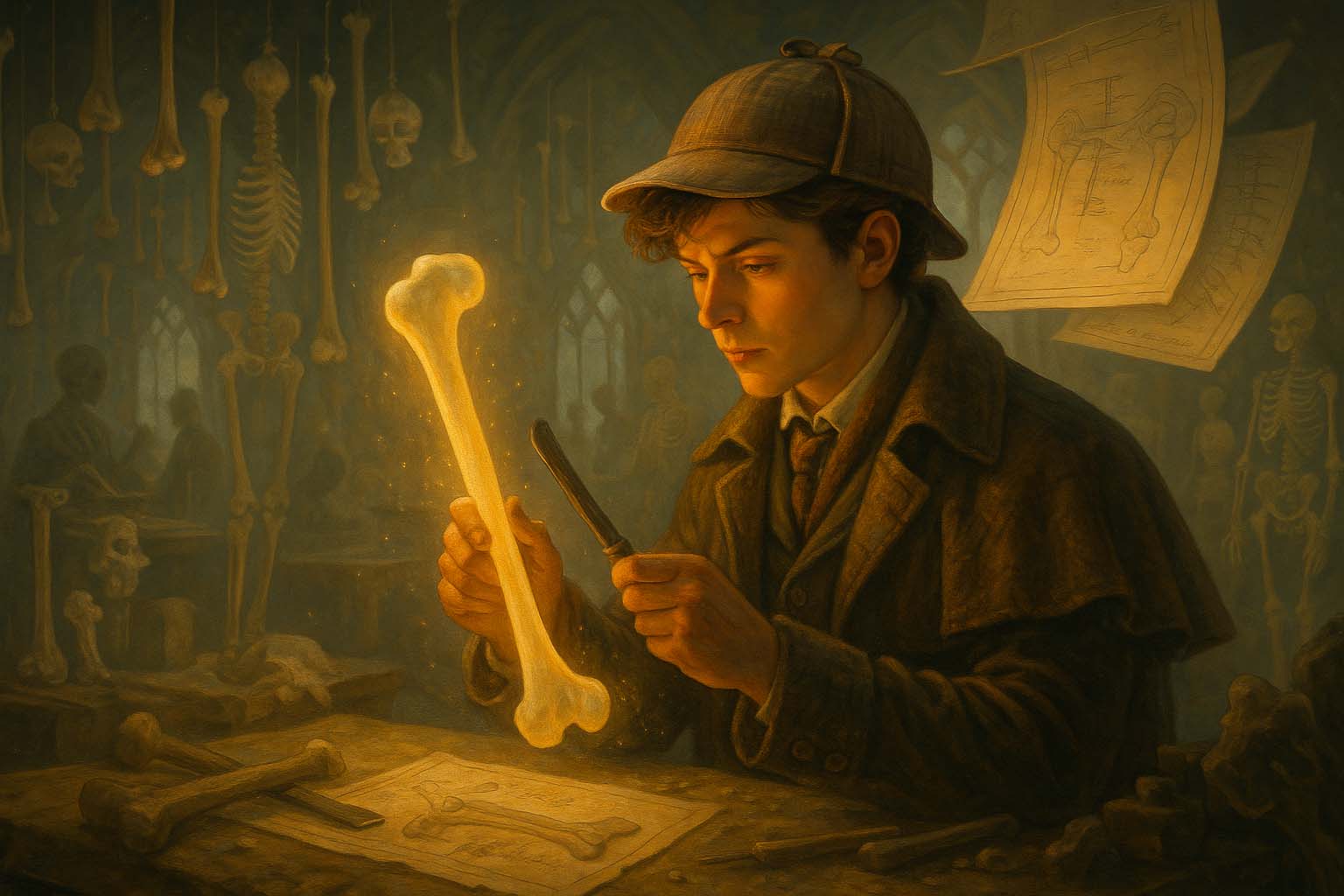
Orthopaedic Surgery
- Posted by admin
- Categories Core Surgical Specialties
- Date May 24, 2025
- Comments 0 comment
The Bone Detective’s Domain – Cracking the Cases of Breaks, Joints, and the Architecture of Movement
1. Introduction: The Scene of the Specialty
Step into the shoes of an Orthopaedic Surgery sleuth.
This is the domain of structure and strength—the skeletal blueprint beneath every step, lift, and leap. Orthopaedic surgeons are mechanics of the body’s frame, restoring what has been fractured, worn, or dislocated. Their cases involve force and form: shattered bones, torn ligaments, and joints ground down by time or trauma. Welcome to a world where clicks, cracks, and collisions reveal clues, and where drills and screws are used with the care of an artisan and the clarity of an engineer.
2. Key Mysteries They Solve (Common Conditions)
These detectives specialise in solving cases involving:
- Fractures and Trauma – from simple breaks to complex multi-limb injuries.
- Arthritis and Joint Replacement – restoring motion in hips, knees, and shoulders.
- Sports Injuries – ACL tears, meniscal damage, rotator cuff injuries.
- Spinal Disorders – including disc herniation, scoliosis, and vertebral instability.
Each case demands spatial thinking, mechanical intuition, and surgical strength.
3. Their Trusted Tools & Techniques
Every detective has their kit—and in Orthopaedic Surgery, tools may include:
- Plates, Screws, Rods, and Nails – stabilising fractures and restoring anatomy.
- Joint Prostheses – precision-crafted implants for worn joints.
- Arthroscopy – seeing inside joints through tiny portals to diagnose and repair.
- Fluoroscopy & Imaging – guiding alignment with live intraoperative feedback.
This is hands-on problem-solving—where function is rebuilt with careful force.
4. The Charms of This Field: Why It Captivates the Curious
- Tangible Transformation: Walk in broken, walk out healing.
- Mechanical Logic: Bones don’t lie—X-rays tell clean, visual stories.
- Procedural Variety: From micro-surgery to full joint reconstruction.
- Clear Outcomes: Restore alignment, regain movement, reduce pain—measurable wins.
This is where surgery meets structure, and movement becomes the metric of success.
5. Challenges: The Toughest Cases They Face
- Multi-Trauma Complexity – The body rarely breaks in one place alone.
- Infection & Hardware Failure – When the body rejects what was meant to restore.
- Demanding Recovery Pathways – Rehab is long, and motivation varies.
- Surgical Burden – Long operations, physically taxing, emotionally stoic.
But the seasoned orthopaedic surgeon knows: healing bones rebuild lives—and independence.
6. Famous Cases and Hallmark Clues
- The “Classic Presentation” – Hip fracture in an elderly patient after a fall: needs prompt fixation.
- The “Zebra” – A young athlete with chronic leg pain: undiagnosed stress fracture.
- The “Aha Moment” – Recognising spinal instability in a trauma patient with subtle neurological symptoms.
7. Your Training Trail: How to Join the Investigation
To become an Orthopaedic Surgery detective:
- Master anatomy and biomechanics—understand the body as structure and system.
- Develop your manual dexterity and surgical stamina early.
- Train in trauma theatres, arthroplasty lists, and sports injury clinics.
- Collaborate with physiotherapists, radiologists, and pain specialists.
Whether reconstructing a shattered femur or replacing a worn-out knee, you’ll bring people back to the lives they want to live.
8. Final Words: The Signature of the Orthopaedic Surgery Detective
Orthopaedic detectives rebuild the framework of human motion.
They treat breaks not as ends, but as beginnings—of walking again, working again, living again.
They combine strength with strategy, power with precision, and engineering with empathy.
So if you’re drawn to the sound of saws and the silence of restored steps—
then this is your theatre of movement and mastery.



